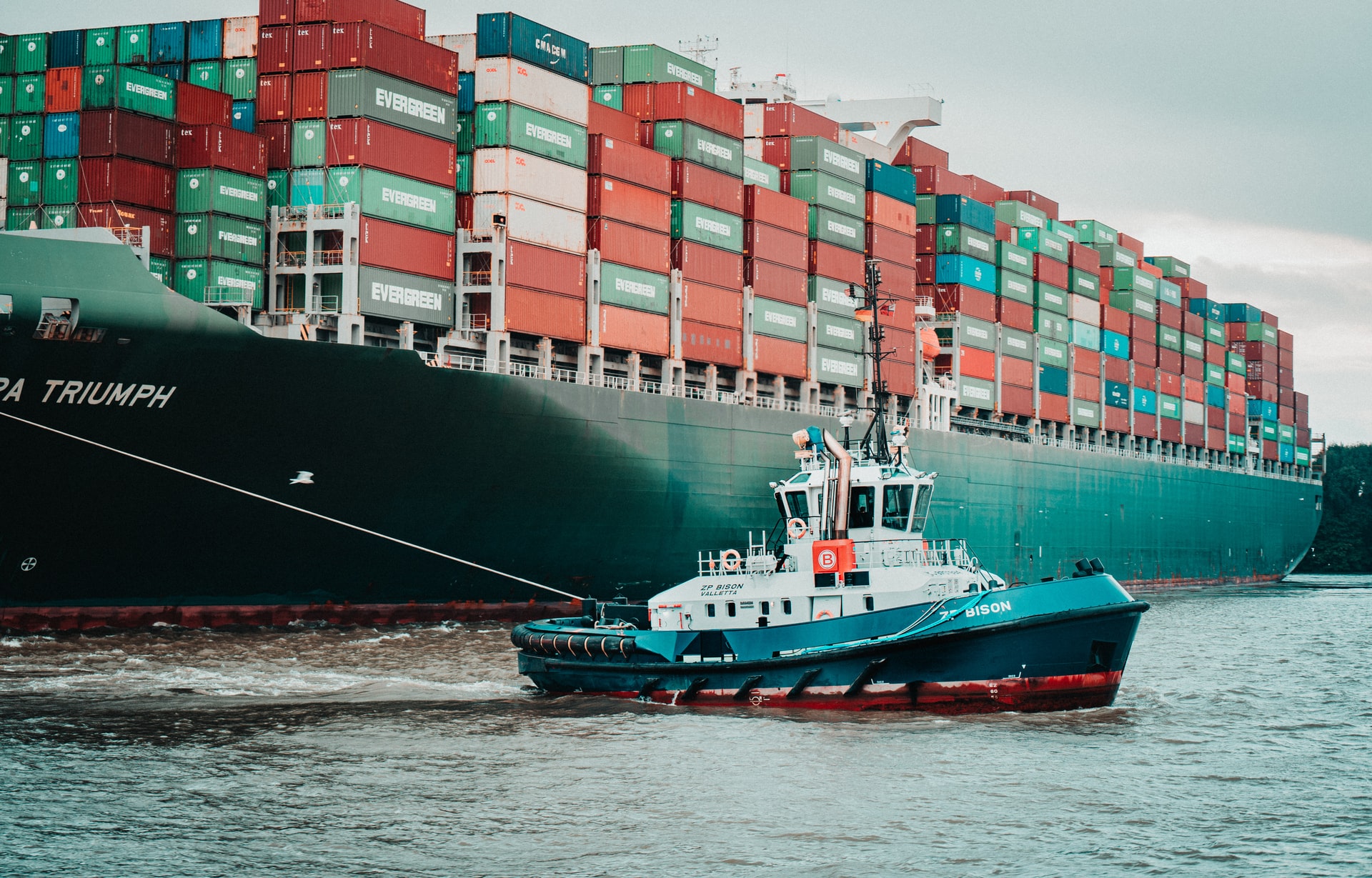
A New Supply Chain
The global trade industry is changing at a faster pace than ever before. But contrary to what many think, the driving force behind these changes is not only the threat of terrorism: the driving force behind the changes our industry is experiencing is the ever-increasing ability of importers large and small to leverage the power of the Internet and computers. Technology has allowed greater supply chain visibility, and this possibility is creating demand for even more innovation. Never before has so much information been available at the touch of a button. Never before have there been so many ways to send and receive information. Never before have there been so many choices.
This revolution has prompted changes in every part of the global trade industry. One of the most obvious of those changes is in the relationship between freight forwarders/3PL providers, Customs House brokers, and their importer customers. In today’s world, the ability to provide information about shipments is nearly as important as being able to move goods. That is only the case because the desktop PC and the ability to access the Internet has become ubiquitous in even the smallest importers’ organizations. The importer’s ability to collect and manipulate the information has driven the need for the forwarders/3PLs/brokers to provide timely and accurate information. This synergy has demanded ever more powerful software solutions from developers with importer-specific industry knowledge
It is now possible for importers to have a level of visibility of their business that was impossible just a few years ago. Importers realize the profound effect access to this information will have on their ability to be profitable, and they are eager to implement a solution, which begs the question: What’s the best solution? The answer is both simple and stunningly complex. This paper will discuss the importer’s unique supply chain challenges in detail, including what makes the industry unique; the most common methods importers are using to deal with these issues; the most common mistakes; and what the future holds for the industry.
In today’s world, the ability to provide information about shipments is nearly as important as being able to move goods.
Importing is unlike any other business. While there are undoubtedly benefits to the off-shore sourcing of goods, there are very real challenges and risks. The basic challenge is to mitigate the risk with a repeatable process to ensure your company is able to reap the benefits of international sourcing. To accomplish this, it is essential to ensure that you have all pertinent information about each transaction your company makes at the click of a mouse.
Distributors and manufacturers sourcing goods only in the US can count on receiving their shipments with relative ease and speed. In his book, America the Vulnerable, Dr. Stephen Flynn describes a typical container shipment into the United States as involving more than 20 transfers of custody of the container, in more than 5 different countries, on more than three ships, and in 5 trucks; all over the course of just under 45 days.
First, let’s examine the basic processes of the three main types of US-based importers:
While there are undoubtedly benefits to the off-shore sourcing of goods, there are very real risks.
Straight Traders – These companies purchase only to fulfill orders they have taken from their own customers. They carry no inventory and all their inbound goods are sent directly to the customer. This is sometimes referred to as drop-shipping, door-to-door, just-in-time, and back-to-back. Their supply chain visibility can be as simple as using their shipper’s tracking system to understand where their goods are.
Importer-Distributors – These companies often use a combination of back-to-back, and fulfillment from inventory held at one or more distribution centers. Their needs are greater than the straight trader since they must be concerned with on-hand inventory. These companies are also often placing blanket orders to be shipped by their vendor over the course of weeks or months. They often have complex consignment arrangements. It is essential that importer-distributors have a view of goods “at source”, “in-transit”, and in any warehouses they might own or rent.
Importer-Manufacturers – These companies are importing goods (often raw materials) to be used in their own manufacturing processes. They are extremely at risk from a supply chain failure because a shortage of raw materials could force costly changes in production schedules, staff down-time, and missed ship dates.
For many importers, the process begins with the offer of a product by foreign vendors. Usually, this is managed by the importer’s foreign agent (often a contractor rather than an employee). These agents also manage customer RFQs (request for quote) that are funneled to them from the importer’s US-based sales force. Some companies can expect to convert a high percentage of these quotes into sales, while others will convert only a few. The trick is to manage this information in a way that allows efficient conversion into a sale without requiring excessive data entry which would be wasted if the sale is not won.
The next step in the process is the creation of sales orders and purchase orders. A sales order is sent to the importer’s customer, confirming the order which has been quoted verbally. Sales orders are also used to acknowledge a customer’s purchase order. Either way, the sales order is just one more link in what is becoming the foundation of the supply chain.
Some companies can expect to convert a high percentage of quotes into sales, while others will convert only a few.
Purchase orders are used to place an order for goods with your foreign vendor. In some cases, POs are issued to replenish goods that are being sold off from a warehouse. In others, the importer’s PO is issued to fulfill a customer’s specific PO. This is an example of a back-to-back shipment.
No matter the case, it is vitally important to be able to connect these documents in some way to allow for easy cross-reference.
Documents, Documents, Documents
Quotes, Offers, POs, SOs, Bills of Lading, Letters of Credit, Certificates of Analysis, Invoices associated with the shipments (freight, etc.), Container Instruction Sheets, FDA Declarations, Delivery Orders, Manifest, Packing Lists, Certificates of Origin, Credit Memos, End Use Certificates, and many, many more documents are a necessary part of the importer’s supply chain. Again, it is vitally important to be able to create a relationship between these pieces of paper and the information they contain.
Why? The ability to cross-reference these documents in order to facilitate the clearance of goods is one reason. Another is that the puzzle presented by these documents must be unraveled if the importer is to have any hope of determining profit and loss.
A third reason involves US Customs and Border Protection’s (CBP) role as an arm of the Department of Homeland Security. As such, CBP can require an importer to produce all documents associated with a shipment within a time certain. It is the responsibility of the importer of record (not the broker, not the shipping company) to maintain these documents in a way that ensures the ability to comply with these requests. And the list of reasons goes on and on.
One aspect of importing is exactly like every other business the world over: Importers are in business to make money. But the nature of the importing business is such that it is extremely difficult to determine profit/loss. Think of the documents above. It is daunting enough to imagine being able to manage the pieces of paper (even images of them), without trying to imagine how you might bring together all the information those documents contain. But that’s exactly what importers have to do.
Importers are in business to make money. But the nature of the importing business is such that it is extremely difficult to determine profit/loss.
The term “landed cost” refers to the total cost of goods including things like: materials, freight, insurance, shipping, demurrage, duty, loading/unloading, inland freight, and any number of additional costs that need to be associated with an inbound shipment. It’s not difficult to appreciate the importance of understanding landed costs; without a true understanding of this number, it is impossible to set your selling price. Set your price too low and you are literally subsidizing your customer’s purchase.
But doesn’t there always seem to be an exception? Some importing verticals, electronic components is one, operate on such high margins that landed costs are irrelevant. Importers who run these margins should know that history shows all verticals eventually become commoditized, so the relevance of exact landed cost is ultimately universal despite what one might hope. It is industry best practice.
Our experience shows that ninety – ninety five percent of importers are using a standard accounting application, supplemented by spreadsheets, to track their inbound shipments, including the costs we’re discussing now.  At best, this hodgepodge produces an average landed cost. Yes, some segments of the importing industry are not known for supplying high-quality goods, but others, like food and chemical importers, are expected to do exactly that. In either case, an importer’s exact understanding of costs is essential to long-term profitability.
At best, this hodgepodge produces an average landed cost. Yes, some segments of the importing industry are not known for supplying high-quality goods, but others, like food and chemical importers, are expected to do exactly that. In either case, an importer’s exact understanding of costs is essential to long-term profitability.
Traditionally, importers have viewed “logistics” and “supply chain” as synonymous. The most successful importers know that they’re not the same at all. The most successful importers understand that their supply chain really begins with a quote or offer; includes terms, costs, transportation, documentation, etc.; and most often ends with a delivery to warehouse or customer (but returns are definitely part of the mix as well).
Logistics, the planning for, physical transport, and documentation of goods from foreign vendor to importer/customer, is only one aspect of the supply chain. Logistics presents one of the greatest challenges because the entire process is beyond the importer’s direct control. Logistics management can only be successful when timely and accurate information from the foreign vendor and carriers is leveraged with an effective internal process.
Ninety-Ninety Five percent of importers are using a standard accounting application, supplemented by spreadsheets, to track their inbound shipments. At best, this hodgepodge produces an average landed cost.
There is a lot of talk about the promise of RFID and other emerging technologies. Even if this technology were fully mature, and even if your company were in a financial position to implement this kind of equipment, it would be putting the cart before the horse for the vast majority of organizations. What we see most often is inaccurate information (arriving too late to be of use anyway), managed with a hodgepodge of spreadsheets, hard copies and emails; none of which can be easily cross-referenced to each other. The result is over-selling, missed opportunities, late delivery penalties, inadequate customer service, wasted person-hours, and more. That all adds up to lost revenue.
You don’t need a crystal ball to be a successful importer. You need products and service from vendors and carriers who understand and fulfill their role in your success. And you need a seamless system to connect all the links in your unique supply chain. The technology is here, and the import industry experts to develop and implement the solution are here too. At VISCO, we are committed to bringing supply chain solutions to small and medium size importers, for whom this technology has been out of reach.
Please call us to discuss your unique situation.





